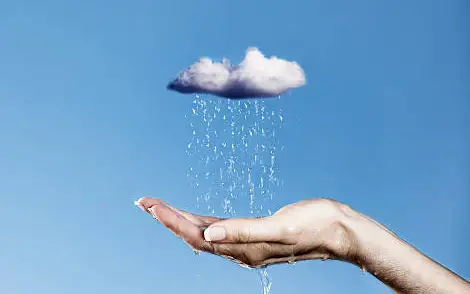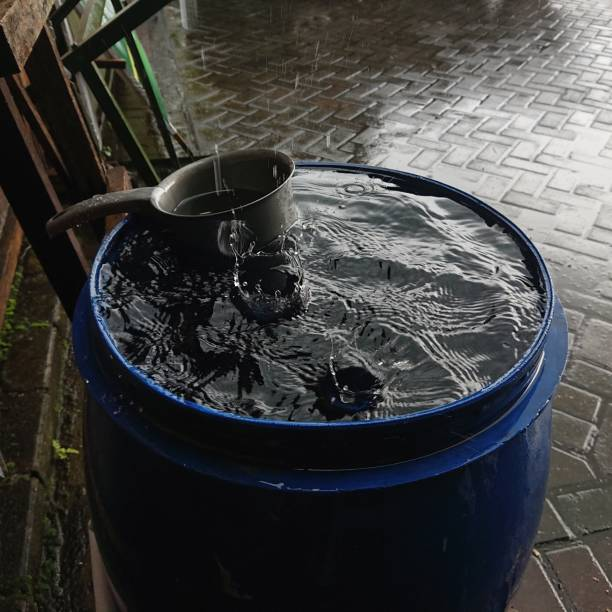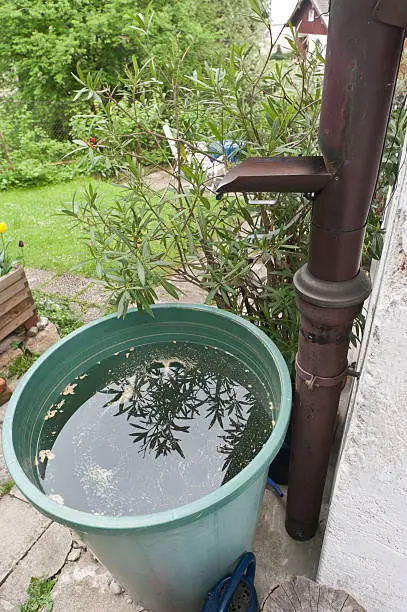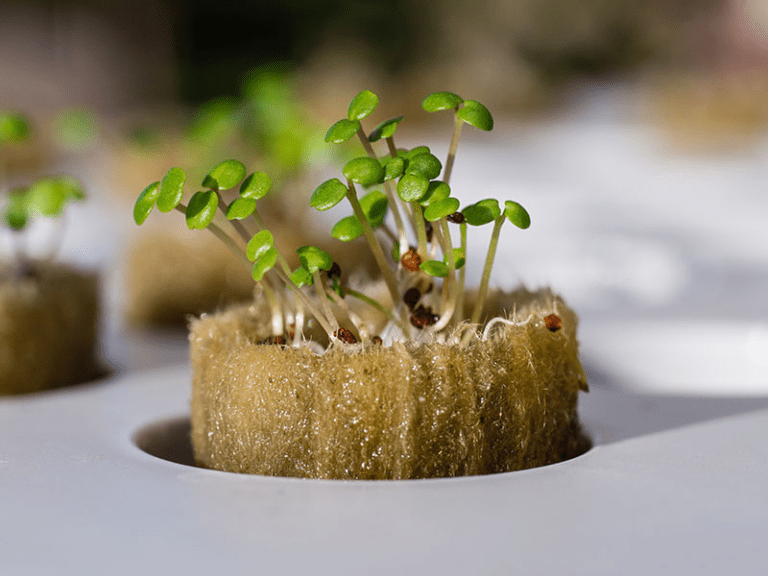Collecting Rainwater: Hints, Tips, and Tricks
Table of Contents
The Benefits of Rainwater Collection
Rainwater collection is a sustainable practice that offers numerous benefits for both the environment and households. By harvesting rainwater, individuals can reduce their reliance on municipal water sources, leading to lower water bills and decreased strain on public water systems. Additionally, collected rainwater is free from many chemicals found in tap water, making it a healthier alternative for watering plants and gardens.
Moreover, rainwater is naturally soft, which is beneficial for irrigation as it helps prevent mineral buildup in soil and on plant roots. This can lead to healthier plants and improved growth in gardens and landscapes. Embracing rainwater collection not only conserves a precious resource but also promotes self-sufficiency and environmentally-friendly practices.

Different Methods of Collecting Rainwater
Rainwater collection is a sustainable practice that allows individuals to harness the power of nature for various purposes, including irrigation, gardening, and even household use. There are several methods of collecting rainwater, each with its own unique benefits and considerations.
One popular method is using rain barrels or tanks to capture and store rainwater from rooftops. This simple yet effective approach involves directing rainwater from gutters into containers for later use. Another method is the installation of underground cisterns or storage tanks to collect larger volumes of rainwater for more extensive irrigation needs. Additionally, some innovative techniques involve incorporating rainwater collection systems into the design of buildings, such as green roofs and permeable pavement systems, allowing for both efficient water capture and enhanced environmental benefits.
Choosing the Right Rainwater Collection System for Your Needs
When it comes to choosing the right rainwater collection system for your needs, there are several factors to consider. Firstly, assess your specific requirements such as the amount of water you need to collect, the space available for installation, and the intended use of the collected rainwater. Different systems offer varying capacities and functionalities, so it’s essential to match the system to your individual needs.
Additionally, take into account the climatic conditions of your region as this will impact the frequency and volume of rainfall, influencing the efficiency of the system. Consider the maintenance requirements and costs associated with each type of rainwater collection system to ensure it aligns with your budget and available resources. By carefully evaluating these aspects, you can make an informed decision to select the most suitable rainwater collection system that meets your specific needs.

Factors to Consider Before Setting Up a Rainwater Collection System
When considering setting up a rainwater collection system, several factors need to be taken into account to ensure its effectiveness. First and foremost, it’s essential to assess the potential water requirements of your household or garden to determine the size of the system needed. Understanding the average annual rainfall in your area is crucial in estimating the amount of water you can collect. Additionally, the available space for installing the collection system, the local regulations regarding rainwater harvesting, and the quality of your roof surface are all important considerations before embarking on this eco-friendly endeavor.
Another vital factor to consider before establishing a rainwater collection system is the material of the collection surface. Different roofing materials can affect the quality of harvested rainwater due to the presence of contaminants like lead or asbestos. It’s also essential to evaluate the accessibility of the collection system for maintenance and cleaning purposes. Furthermore, considering the cost of installation, upkeep, and potential savings on water bills can help in making an informed decision about implementing a rainwater collection system on your property.
How to Calculate the Amount of Rainwater You Can Collect
To calculate the amount of rainwater you can collect, you need to consider the amount of rainfall in your specific location along with the size of the collection surface. Start by determining the average annual rainfall in your area, which can be obtained from local weather records or online databases. Next, measure the surface area available for rain collection, such as your roof or any other impermeable surfaces that can direct rainwater to a collection system.
Once you have these figures, you can use a simple formula to estimate the potential amount of rainwater you can harvest. Multiply the average annual rainfall by the collection surface area to get an idea of the total volume of rainwater that can be collected over a year. Keep in mind that factors like roof slope, material, and efficiency of your collection system can affect this calculation, so adjusting for these variables may provide a more accurate estimate of your rainwater harvesting potential.

Tips for Maintaining Your Rainwater Collection System
Regular maintenance is key to ensuring the optimal performance of your rainwater collection system. Periodically check the gutters and downspouts for debris such as leaves and twigs that can obstruct the flow of rainwater. Clean out any blockages to prevent the system from becoming clogged. Additionally, inspect the storage tank for any signs of damage or leaks, and ensure that the lid is secure to prevent contamination from debris, insects, or animals.
It’s also important to monitor the quality of the collected rainwater. Test the water regularly for pH levels, contaminants, and bacteria, especially if you plan to use it for drinking or irrigation. Install appropriate filters and purifiers to maintain water quality and prevent the growth of algae or bacteria. By staying proactive with maintenance and quality control measures, you can enjoy the full benefits of your rainwater collection system for years to come.
Common Mistakes to Avoid When Collecting Rainwater
When collecting rainwater, there are common mistakes that can hinder the effectiveness of your rainwater collection system. One common mistake is neglecting proper filtration and purification processes. Failing to filter and purify collected rainwater can result in contamination and make it unsuitable for various uses, such as drinking or irrigation. Another mistake to avoid is improper storage of rainwater. Using containers that are not food-grade or failing to seal them tightly can lead to the growth of harmful bacteria and algae, rendering the collected rainwater unusable.
In addition, overlooking regular maintenance of your rainwater collection system can also be a common mistake. Neglecting to clean gutters, filters, and storage tanks can lead to blockages, reduced efficiency, and potential contamination. Lastly, not considering the local regulations and guidelines regarding rainwater collection can result in legal issues and fines. It’s essential to educate yourself on the legal considerations and requirements in your area to ensure that your rainwater harvesting practices are compliant and environmentally responsible.
| Mistake | Description |
|---|---|
| Improper Container Selection | Using containers made of materials that can leach harmful chemicals into the water, such as plastic containers not labeled as food-safe or containers that previously held toxic substances. |
| Lack of Mosquito Prevention Measures | Failing to cover rain barrels or tanks with tightly fitting lids or screens to prevent mosquitoes from breeding in collected water. Stagnant water provides a breeding ground for mosquitoes, which can transmit diseases such as West Nile virus. |
| Neglecting Regular Maintenance | Forgetting to clean rainwater collection systems regularly to remove debris, sediment, and algae buildup, which can clog filters and pipes, impair water quality, and reduce the efficiency of the system. |
| Not Considering Roof Contaminants | Collecting rainwater from roofs treated with chemicals, such as pesticides, herbicides, or lead-based paints, which can contaminate the collected water and pose health risks if used for drinking or irrigation of edible plants. |
| Overlooking First Flush Diverter Installation | Installing rain barrels or tanks without a first flush diverter, which helps divert the initial runoff from roofs containing contaminants, debris, or bird droppings away from the main storage tank, improving water quality and reducing contamination risks. |
| Ignoring Local Regulations | Disregarding local regulations or ordinances regarding rainwater harvesting, such as restrictions on the use of rainwater for certain purposes or requirements for permits or inspections before installing rainwater collection systems. |
| Lack of Overflow Prevention | Failing to install overflow outlets or diverters to prevent rain barrels or tanks from overflowing during heavy rainfall, which can cause flooding, erosion, or water damage to nearby structures or landscapes. |
| Improper Placement of Collection System | Placing rain barrels or tanks in areas prone to flooding, landslides, or where runoff from nearby roads or contaminated surfaces can flow into the collection system, risking water contamination and compromising water quality. |
| Using Collected Water for Potable Uses | Using untreated rainwater collected from rooftops as drinking water without proper filtration, disinfection, or testing for contaminants, which can pose health risks due to potential microbial contamination or chemical pollutants. |
| Disregarding Structural Integrity | Neglecting to ensure rainwater collection systems are structurally sound and securely anchored to withstand weather conditions, such as strong winds or heavy snow loads, to prevent damage or collapse of the system. |
Avoiding these common mistakes when collecting rainwater helps ensure the safety, efficiency, and effectiveness of rainwater harvesting systems while minimizing potential health risks and environmental impacts.
Creative Ways to Use Collected Rainwater
Rainwater collected from your roof can be used in a variety of creative ways around your home and garden. One innovative way to utilize collected rainwater is for watering indoor plants or creating a small indoor hydroponics system. This water is free of additives and chemicals, making it beneficial for nurturing your plants in a natural and eco-friendly manner.
Another excellent way to utilize collected rainwater is for outdoor pond or small water feature maintenance. The natural rainwater is ideal for supporting aquatic life and can help maintain the balance in your pond, reducing the need for tap water and potential harm to the ecosystem.
The Environmental Impact of Rainwater Collection
Rainwater collection is a sustainable practice that offers numerous environmental benefits. One of the key advantages is the reduction of strain on traditional water sources. By harvesting rainwater, less demand is placed on reservoirs and groundwater supplies, helping to alleviate water scarcity issues in regions experiencing water stress. Additionally, rainwater collection plays a role in reducing stormwater runoff, which can contribute to soil erosion, flooding, and pollution of water bodies. By capturing rainwater, we can mitigate these detrimental impacts on the environment and promote conservation of natural resources.
Moreover, the utilization of collected rainwater can lead to decreased energy consumption associated with water treatment and distribution. Traditional water treatment processes require significant amounts of energy to purify and deliver water to households and businesses. In contrast, rainwater is typically free from contaminants and can be used for various non-potable purposes, such as irrigation, cleaning, and flushing toilets. By integrating rainwater collection systems into our infrastructure, we not only reduce our carbon footprint but also contribute to a more sustainable and eco-friendly approach to water management.
Incorporating Rainwater Collection Into Your Home Design
To effectively incorporate rainwater collection into your home design, consider installing a system that seamlessly integrates with your property’s architecture and landscaping. Rain barrels or cisterns can be placed strategically to collect water runoff from roofs and gutters. This collected rainwater can then be used for watering plants, filling ponds, or even for non-potable indoor uses like flushing toilets or doing laundry.
Additionally, incorporating a filtration system into your rainwater collection setup can ensure the water is safe for various purposes. By incorporating rainwater harvesting into your home design, you not only reduce your water bills but also contribute to conserving this precious resource and reducing the strain on municipal water supplies.
How to Filter and Purify Rainwater for Drinking
Filtering and purifying rainwater for drinking purposes is essential to ensure its safety and quality. A basic yet effective method to achieve this is by using a combination of filtration and disinfection techniques. To start, pass collected rainwater through a series of filters like mesh screens or sediment filters to remove larger particles and debris. This initial filtration step helps in preventing clogging of subsequent filtration elements and ensures a clearer water flow for further treatment.
Once the rainwater has been filtered, the next crucial step is disinfection to remove any harmful pathogens and bacteria. One of the most common methods of disinfection is by using chlorine or ultraviolet (UV) light. Chlorine can effectively kill a wide range of microorganisms, while UV light can disrupt the DNA of bacteria and viruses, rendering them harmless. By implementing these filtration and disinfection methods, you can significantly improve the quality of rainwater for safe drinking consumption.

Using Rainwater for Irrigation and Garden Watering
Rainwater is a valuable resource that can be utilized for irrigation and watering gardens, providing a sustainable and eco-friendly alternative to tap water. By collecting rainwater with a properly designed system, gardeners can reduce their reliance on municipal water sources and minimize their environmental impact. Rainwater is naturally soft and free from chlorine and other chemicals, making it an ideal choice for plants that may be sensitive to harsh tap water treatments. Additionally, rainwater is typically at a cooler temperature than tap water, which can benefit plants by preventing heat stress during hot weather.
Incorporating a rainwater collection system into your garden can not only help conserve water but also save money on utility bills in the long run. By capturing and storing rainwater during periods of rainfall, gardeners can ensure they have a supply of water during dry spells or drought conditions. This can be particularly beneficial for maintaining healthy and thriving plants, as consistent watering is essential for optimal growth and productivity. With the right setup and proper maintenance, utilizing rainwater for irrigation and garden watering can be a sustainable and cost-effective solution for garden enthusiasts looking to minimize their environmental footprint.
Legal Considerations for Rainwater Collection
When it comes to rainwater collection, it’s important to be aware of certain legal considerations to ensure that you are in compliance with local regulations. Depending on where you live, there may be specific rules and permits required for setting up a rainwater collection system. Some areas have restrictions on the size of the system or the usage of collected rainwater, so it’s essential to research and understand the laws in your region before embarking on a rainwater harvesting project.
Additionally, it’s worth checking if there are any water rights laws that apply to rainwater collection in your area. In some places, there are strict regulations governing the ownership and use of water, including rainwater. By familiarizing yourself with the legal landscape surrounding rainwater collection, you can avoid any potential issues and enjoy the benefits of harvesting rainwater for your gardening or household needs responsibly.
Tips for Storing Rainwater Safely
When storing rainwater for later use, it is crucial to ensure that the water remains safe and free from contaminants. To achieve this, consider the following tips:
Firstly, always use clean and food-grade containers to store rainwater. Avoid using containers that previously held chemicals or other substances that could contaminate the water. It is also essential to regularly clean and sanitize the storage containers to prevent the growth of algae and bacteria.
Secondly, place your rainwater storage tanks in a shaded area to prevent excessive heat exposure, which can promote the growth of harmful microorganisms. Additionally, consider installing a mesh screen at the inlet of the tank to filter out debris and insects, ensuring the water remains clean and healthy for use.
DIY Rainwater Collection System Installation Guide
Installing a rainwater collection system at home can be a rewarding and environmentally-friendly project for garden enthusiasts. To get started, ensure you have the necessary equipment such as a collection barrel, gutters, downspouts, filters, and a pump if needed. Begin by positioning your collection barrel beneath a downspout to capture the rainwater efficiently. Make sure the barrel is stable and elevated to allow for easy access when using the collected water for gardening purposes.
Next, connect your downspout to the barrel using a diverter kit to ensure the water flows seamlessly into the container. Install a filter at the entry point to prevent debris from entering the barrel and contaminating the water. If you plan to use the collected rainwater for drinking or irrigation, consider adding a purification system to guarantee its safety and quality. Regular maintenance of your system, including cleaning the filters and checking for leaks, will help prolong its lifespan and efficiency.

Innovative Rainwater Collection Ideas for Urban Spaces
In urban areas, incorporating rainwater collection systems into the built environment can be both innovative and practical. One creative idea is to install green roofs, where plants and vegetation absorb rainwater, reducing runoff and providing natural insulation for buildings. This method not only helps to manage stormwater but also enhances urban biodiversity and improves air quality. Additionally, using permeable pavement in sidewalks and driveways allows rainwater to seep through, reducing the burden on drainage systems and replenishing groundwater supplies.
Another innovative approach for urban rainwater collection is the use of rain gardens, which are strategically designed planted areas that capture and filter rainwater from roofs, roads, and other surfaces. These gardens help to reduce flooding and erosion, improve water quality, and provide habitat for beneficial insects and wildlife in urban settings. By integrating rain gardens into city landscapes, urban areas can mitigate the effects of stormwater runoff and contribute to a more sustainable and resilient environment.
Can rainwater collection systems help reduce water bills in urban spaces?
Yes, rainwater collection systems can help reduce water bills by providing an alternative source of water for activities like gardening, flushing toilets, and washing clothes.
Are there any government incentives for installing rainwater collection systems in urban areas?
Some governments offer incentives such as rebates or tax credits for installing rainwater collection systems to promote water conservation.
What is the lifespan of a rainwater collection system in an urban setting?
The lifespan of a rainwater collection system can vary depending on the quality of materials used and how well it is maintained, but a well-constructed system can last for many years.
Can rainwater collected from urban areas be used for drinking purposes?
It is not recommended to use rainwater collected from urban areas for drinking without proper filtration and purification, as it may contain contaminants from air pollution and other sources.
How can I incorporate rainwater collection into a small urban apartment?
You can set up a small rain barrel on a balcony or rooftop to collect rainwater for watering plants or other household uses in a small urban apartment.

Beck Wakeford is a dedicated writer at SouthElMonteHydroponics, with a fervent enthusiasm for agriculture and technological innovation. Armed with a degree in Agricultural Engineering from a leading university, Beck specializes in hydroponic systems design, automation, and optimization. Their passion for merging traditional farming with cutting-edge technology drives them to explore novel solutions for sustainable food production. Beck’s expertise and keen interest in the intersection of engineering and agriculture make them a valuable asset in the quest for efficient and eco-friendly farming practices. Through their writing, Beck aims to inspire others to embrace the potential of hydroponics in shaping a more sustainable future.



